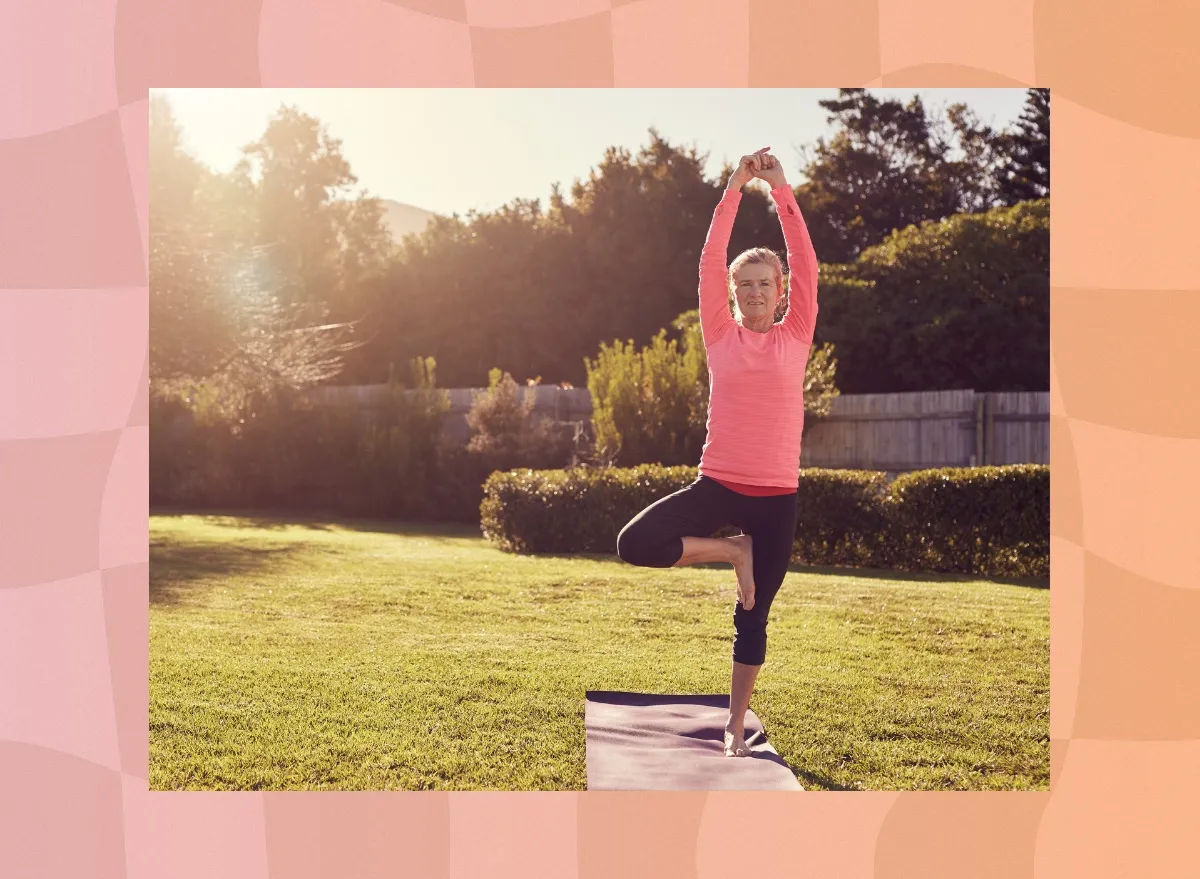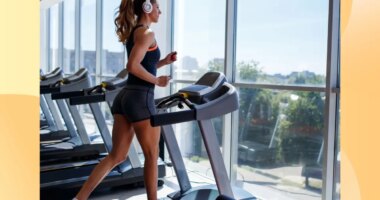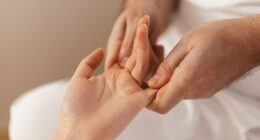Have you ever noticed that maintaining your balance isn’t quite as effortless as it used to be? You’re not alone. As we age, our balance naturally changes, but that doesn’t mean we can’t do something about it. I’m Dr. Landon Uetz, a Doctor of Physical Therapy practicing in Phoenix, AZ, where I run The Pickleball Physio and work in an outpatient orthopedic setting. With four years of experience helping patients improve their stability and balance, I’ve developed a comprehensive understanding of how crucial balance becomes as we age. Take these 10 simple tests to assess your balance – they might just help you prevent a fall before it happens.
Why Balance Becomes More Important After 50
There are 3 main components of balance – Vision (what we see), somatosensory (what we feel), Vestibular (inner ear). These all can be negatively impacted while we age making it more important to do what we can to remain stable. Many different factors can affect vision such as reduction in clarity, depth perception troubles, or eye disorders that may make it difficult to see obstacles that we may come across. The somatosensory system can be negatively affected as we age due to sensation changes throughout the lower extremity, muscle strength and endurance decline, and limitations in the feedback our body sends the brain as to where our body is in space. Lastly, the vestibular system can experience age related changes over time affecting quicker movements, and can increase instability when changing head positions.
The Single Leg Stance Test
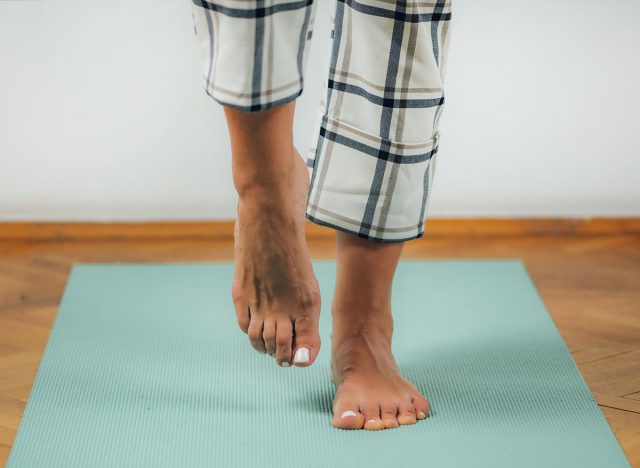
This test measures your ability to maintain balance on a single leg. To perform it safely, stand near a table or countertop with a chair behind you, so you have hand assist or rest as needed. What’s considered a good result varies by age:
– Over 30 seconds each leg for those under 60
– 20-30 seconds each leg from 60-70
– 10-20 seconds for those who are 70-80
– 5-10 seconds for those above 80
The Narrow Stance Test with Eyes Open
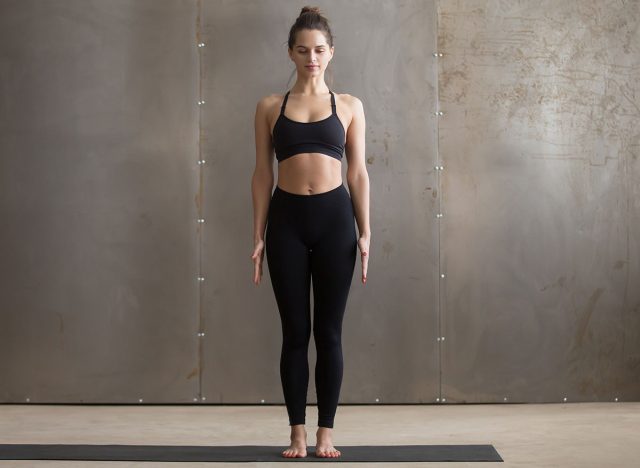
Stand with feet narrow and your eyes open. This test reduces your base of support which challenges your balance, in comparison to a wide/narrow stance. Perform near a table/countertop and have a chair behind you if needed. You should target maintaining this position for over 30 seconds. Try to limit significant side to side/front to back sway.
The Narrow Stance Test with Eyes Closed
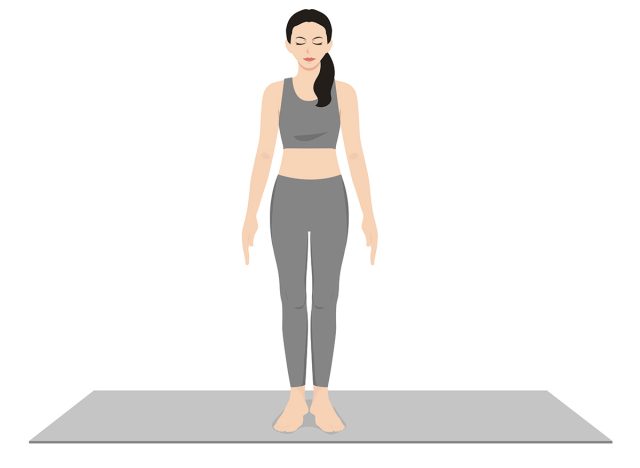
Stand with feet narrow and your eyes closed. This reduces your base of support while taking away the visual component of balance, further challenging the vestibular and somatosensory system. Perform near a table/countertop and have a chair behind you if needed. Target maintaining this position for over 30 seconds, and try to limit significant side to side/front to back sway.
The Tandem Stance Test
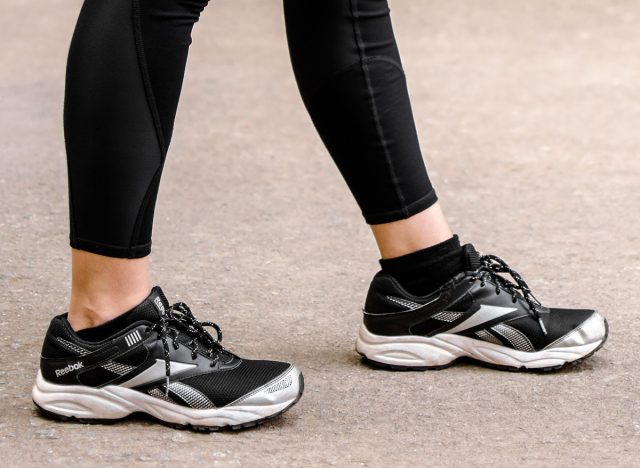
Stand with one foot in front of the other (you may switch to the other side afterwards). This reduces your base of support which challenges your somatosensory system – forcing you to rely more on your vision and vestibular system. Perform near a table/countertop and have a chair behind you if needed. Target maintaining this position for over 30 seconds. Try to limit significant side to side/front to back sway, and look forward rather than at your feet for an added challenge.
The Standing Reach Test
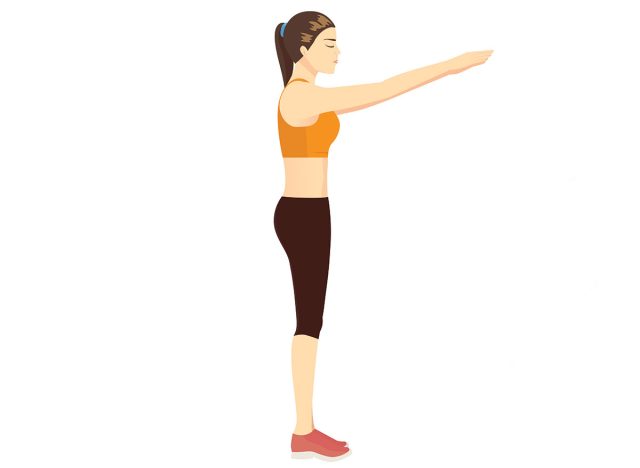
Standing next to a wall with feet side by side, reach as far forward as you can without stepping or falling. This measures your ability to reach outside of your base of support. Perform next to a wall to assist in balance, and don’t reach further than you can control. You want to be able to reach more than 6 inches.
The Timed Up and Go Test
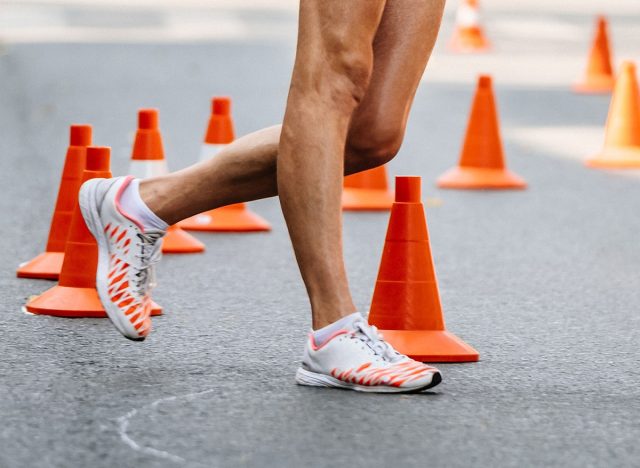
Place an object 10 ft in front of a chair. Start the timer and stand and walk around the object and return to the chair as quickly and safely as you can, stop the timer once you sit back down. This measures your ability to walk in tight spaces, including sitting/standing from the chair and making a turn. Only walk within your means, and use an assistive device such as walker/cane if you are used to using one. You want to complete the test in less than 12 seconds. Remember to start the timer before you stand, and stop it once your bottom hits the chair.
The Berg Balance Test
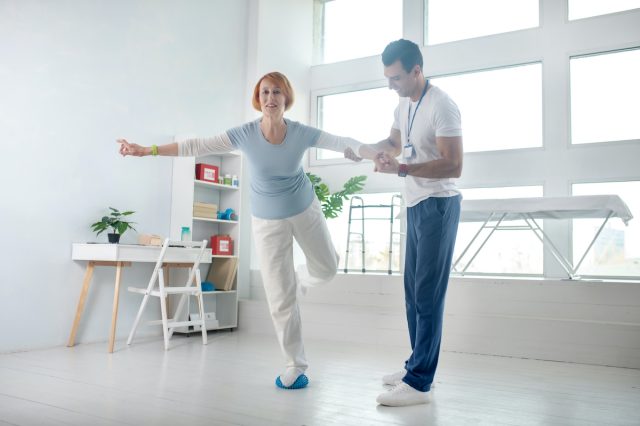
This test includes 14 mini tests that assess your balance. Follow each test in order to receive a score that can be compared to normative values. It measures common activities requiring balance like standing/reaching/turning/walking. If you are very limited with balance, perform with a gait belt or someone present for your safety. You want to score over a 45 to indicate reduced risk of falls. Have someone present to help administer the exam in order to grade you.
The Tandem Walking Test
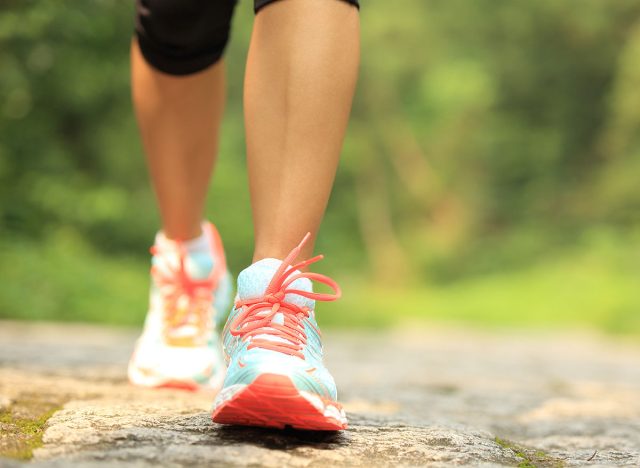
Try to walk heel to toe for around 10 feet while remaining in a straight line. This measures your ability to maintain your balance while walking with a reduced base of support. Have someone alongside of you if you are concerned about balance, or perform along a wall or table/countertop. You should be able to complete without significant side to side sway. Remember to look up, rather than down at your feet!
The Five Times Sit to Stand Test
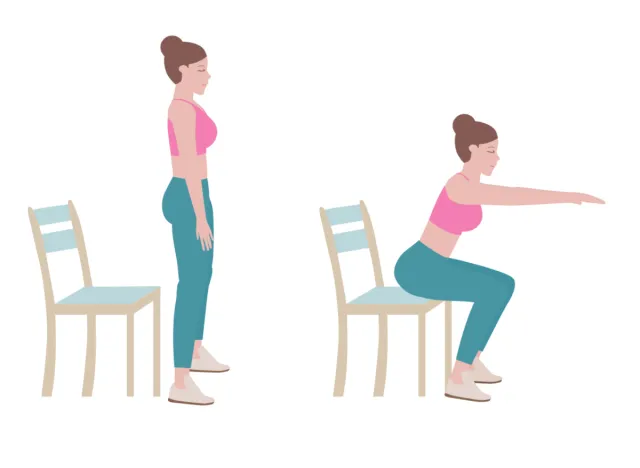
Start timer and complete 5 sit to stands as quickly and safely as you can – attempt without arm support but can use if needed. This assesses your lower extremity strength – required for maintaining upright standing/catching balance. Use arm rests as needed. Try to complete in less than 8-10 seconds. Fully stand straight before returning to the chair, and try not to ‘plop’ down.
The Mini-BESTest
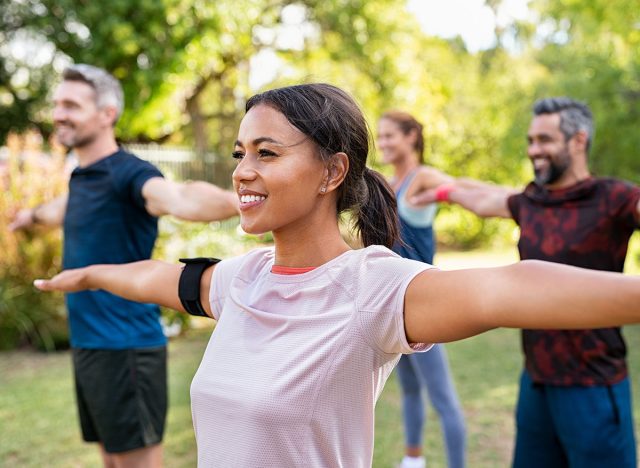
This is a series of 14 mini assessments that takes a look at posture, stepping strategies, anticipatory balance, and gait stability. Have a professional take you through the exam in order to provide a score to compare to norm values. This measures postural stability, gait, and reactionary balance. Have someone present to help in case you stumble or lose your balance. You want to score above a 20 out of 28, with a higher score being better. Follow the format provided on assessment – it is standardized.
Daily Habits to Maintain Good Balance
Some other activities that can positively affect your balance include regular walking – shoot for 20-30 mins every day with the idea that you can “use it or lose it”. If you aren’t regularly walking, you may continue to have difficulty being able to. Strength and resistance training is also a major component of improving balance. Your ability to prolong stand/walk as well as catch your balance with various stepping strategies can be a game changer between a near fall and experiencing an actual fall. These exercises can include sit to stands, hinging exercises, and various hip strengthening.
When to Consult a Healthcare Provider
If anyone feels that they are experiencing an increase in near falls, let alone actual falls, I would consult with a provider. There are many things that can be implemented into routine to mitigate the risk in a more proactive manner rather than waiting until we fall to try and improve it. Physical Therapists can implement a comprehensive exercise routine that is tailored to YOU individually, which will lead to optimal results. And if you enjoyed this article, don’t miss How Long Your Walking Workout Should Be To Shrink Belly Fat.

